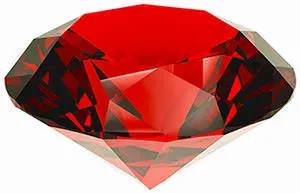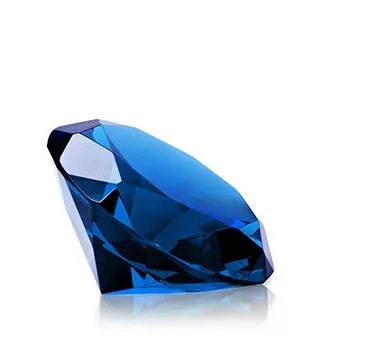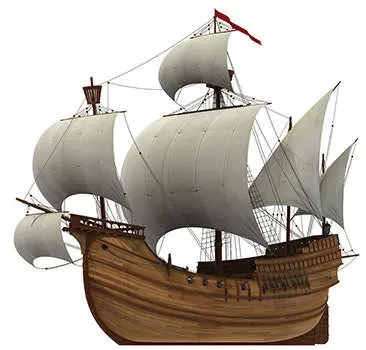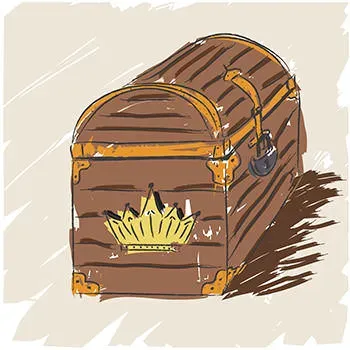 Jewelry can be fascinating. The jewels themselves glisten and lure, and the lifestyle that's associated with such adornments is equally appealing. If a gemstone becomes famous, the people who have bought, worn, or indeed stolen the stone become a part of the legend, but the gemstone itself develops a reputation that can last for centuries. Here, we'll tell you about four of the world's most notorious stones and the paths they took across continents and generations.
Jewelry can be fascinating. The jewels themselves glisten and lure, and the lifestyle that's associated with such adornments is equally appealing. If a gemstone becomes famous, the people who have bought, worn, or indeed stolen the stone become a part of the legend, but the gemstone itself develops a reputation that can last for centuries. Here, we'll tell you about four of the world's most notorious stones and the paths they took across continents and generations.
 One of the most fabulous stories about one of the world�s most ancient stones is the tale of the Black Prince�s Ruby. This gem is actually a red spinel shaped like a bead that weighs roughly 170 carats and is the size of a chicken�s egg. In the 14th century, Castilian Spain was being recentralized and the Moorish kingdom of Granada was under constant attack as Spain attempted to reconquer the area. Abu Said, the Moorish Prince of Granada, was killed for his wealth and territory by Don Pedro of Castile, and the beautiful red spinel was captured for Don Pedro�s collection at that time. When Don Pedro�s illegitimate brother led a revolt against him, Don Pedro called for the help of the Black Prince, who won the battle for Don Pedro, and demanded Abu Said�s
One of the most fabulous stories about one of the world�s most ancient stones is the tale of the Black Prince�s Ruby. This gem is actually a red spinel shaped like a bead that weighs roughly 170 carats and is the size of a chicken�s egg. In the 14th century, Castilian Spain was being recentralized and the Moorish kingdom of Granada was under constant attack as Spain attempted to reconquer the area. Abu Said, the Moorish Prince of Granada, was killed for his wealth and territory by Don Pedro of Castile, and the beautiful red spinel was captured for Don Pedro�s collection at that time. When Don Pedro�s illegitimate brother led a revolt against him, Don Pedro called for the help of the Black Prince, who won the battle for Don Pedro, and demanded Abu Said�s ![]() ruby in exchange for his services. The Black Prince took the ruby to England in 1366, where it remained absent from historical record until 1415. At that point, it resurfaced in the gem-encrusted helmet of Henry V of England, who almost lost his life and the helmet during the Battle of Agincourt. Instead, Henry V won the battle against the French and the gem remains in the possession of the English royalty today. It is set in the cross patt�e in the front of the Imperial State Crown of the United Kingdom.
ruby in exchange for his services. The Black Prince took the ruby to England in 1366, where it remained absent from historical record until 1415. At that point, it resurfaced in the gem-encrusted helmet of Henry V of England, who almost lost his life and the helmet during the Battle of Agincourt. Instead, Henry V won the battle against the French and the gem remains in the possession of the English royalty today. It is set in the cross patt�e in the front of the Imperial State Crown of the United Kingdom.
 The Hope Diamond is a deep blue
The Hope Diamond is a deep blue ![]() diamond that currently weighs 45.42 carats and is housed in the Smithsonian Natural History Museum, but when it was first found in the Kollur mine in Golconda, India, it was called the Tavernier Blue and was cut crudely into a triangle weighing 112 3/16 carats. Possibly stolen from the eye of a statue of the Hindu goddess Sita (hence the famous curse associated with the stone), it was purchased in 1661 by French merchant Jean-Baptiste Tavernier, who sold it in 1668 to King Louis XIV of France. The court jeweler cut the stone into a 67 1/8 carat gem, which became known as the French Blue. Set in gold and suspended on a neck ribbon, the Blue Diamond of the Crown was worn by King Louis XV on ceremonial occasions. When he died, Louis XVI gave the diamond ï¾– now set into a pendant ï¾– to Marie Antoinette, but when they were imprisoned during the French Revolution, the pendant was stolen. Six men broke into the house that stored the crown jewels on September 11, 1792, and one of them, a cadet named Guillot, tried to sell it four years later, but was put in jail, and the diamond fell out of recorded history. In September of 1812, the diamond resurfaced ï¾– that's twenty years after the theft of the French Blue, just after the statue of limitations for the crime had expired. A diamond merchant in London named Daniel Eliason possessed the stone at the time, but it soon moved on to the collection of Henry Philip Hope, who had it set on a brooch that he lent out to his sister-in-law to wear at society balls. When Henry died, the Hope Diamond became entangled in inheritance battles, but one of the nephews ï¾– another Henry ï¾– acquired the gem and put it on display at the Great Exhibition of London and the Paris Exhibition Universelle. Upon his death, the stone passed to his wife's grandson Francis, who was in financial distress. Francis lived off his wife, the American actress May Yohe, until 1901, when he received the court's permission to sell the diamond. After that, the Hope Diamond changed hands throughout the wealthy of London and Paris, was re-set by Cartier in 1911, and sold to the American socialite Evalyn Walsh McLean. Harry Winston acquired the jewel after her death, and he had its bottom facet cut to increase its brilliance, then donated it to the Smithsonian Institution in 1958, sending it through the U.S. Mail in a plain brown paper bag. So what's the curse associated with this popular stone? Though some of its owners have died or lost their fortunes while in possession of the gem, its more likely that their flamboyant lifestyles emptied their bank accounts than that the Hope Diamond brought them down.
diamond that currently weighs 45.42 carats and is housed in the Smithsonian Natural History Museum, but when it was first found in the Kollur mine in Golconda, India, it was called the Tavernier Blue and was cut crudely into a triangle weighing 112 3/16 carats. Possibly stolen from the eye of a statue of the Hindu goddess Sita (hence the famous curse associated with the stone), it was purchased in 1661 by French merchant Jean-Baptiste Tavernier, who sold it in 1668 to King Louis XIV of France. The court jeweler cut the stone into a 67 1/8 carat gem, which became known as the French Blue. Set in gold and suspended on a neck ribbon, the Blue Diamond of the Crown was worn by King Louis XV on ceremonial occasions. When he died, Louis XVI gave the diamond ï¾– now set into a pendant ï¾– to Marie Antoinette, but when they were imprisoned during the French Revolution, the pendant was stolen. Six men broke into the house that stored the crown jewels on September 11, 1792, and one of them, a cadet named Guillot, tried to sell it four years later, but was put in jail, and the diamond fell out of recorded history. In September of 1812, the diamond resurfaced ï¾– that's twenty years after the theft of the French Blue, just after the statue of limitations for the crime had expired. A diamond merchant in London named Daniel Eliason possessed the stone at the time, but it soon moved on to the collection of Henry Philip Hope, who had it set on a brooch that he lent out to his sister-in-law to wear at society balls. When Henry died, the Hope Diamond became entangled in inheritance battles, but one of the nephews ï¾– another Henry ï¾– acquired the gem and put it on display at the Great Exhibition of London and the Paris Exhibition Universelle. Upon his death, the stone passed to his wife's grandson Francis, who was in financial distress. Francis lived off his wife, the American actress May Yohe, until 1901, when he received the court's permission to sell the diamond. After that, the Hope Diamond changed hands throughout the wealthy of London and Paris, was re-set by Cartier in 1911, and sold to the American socialite Evalyn Walsh McLean. Harry Winston acquired the jewel after her death, and he had its bottom facet cut to increase its brilliance, then donated it to the Smithsonian Institution in 1958, sending it through the U.S. Mail in a plain brown paper bag. So what's the curse associated with this popular stone? Though some of its owners have died or lost their fortunes while in possession of the gem, its more likely that their flamboyant lifestyles emptied their bank accounts than that the Hope Diamond brought them down.
 In India, in the 17th century, a
In India, in the 17th century, a ![]() diamond was found that weighed 410 carats in the rough. It was smuggled to the coast hidden under the bandages covering a self-inflicted wound. An English sea captain saw through this ruse and murdered the poor finder, selling the jewel to an Iranian trader for a mere $5000. A short time later, in 1702, the diamond was sold to the Governor of Madras, Thomas Pitt, for $100,000. Pitt sent the stone to England, where it was cut to a cushion-shaped brilliant weighing 140.5 carats. At that point, it was named The Pitt. In 1717, Pitt sold his stone to the regent of France, and the diamond made its way to the crown of Louis XV, who wore it during his coronation in 1722. Marie Antoinette is also said to have loved the diamond and to have worn it frequently. In 1792, it was stolen along with the French Blue and other French crown jewels, but this particular diamond was recovered and given as security for a war loan in 1797. When the diamond made its way back to France, it was set into the hilt of Napoleon Bonaparte's sword, and he carried this sword during his coronation as the emperor of France in 1804. Napoleon's second wife, Marie Louise, took the stone to Austria after Napoleon fell, but the diamond kept making its way back to France and was renamed The Regent. Set in Charles X's crown and then in a diadem for the Empress Eugenie, the stone was the only one of the French crown jewels not to be sold at auction in 1887. It was put on exhibition at the Louvre and remains there to this day, despite a brief period during WWII when it was hidden behind a stone panel at the Chateau du Chambord.
diamond was found that weighed 410 carats in the rough. It was smuggled to the coast hidden under the bandages covering a self-inflicted wound. An English sea captain saw through this ruse and murdered the poor finder, selling the jewel to an Iranian trader for a mere $5000. A short time later, in 1702, the diamond was sold to the Governor of Madras, Thomas Pitt, for $100,000. Pitt sent the stone to England, where it was cut to a cushion-shaped brilliant weighing 140.5 carats. At that point, it was named The Pitt. In 1717, Pitt sold his stone to the regent of France, and the diamond made its way to the crown of Louis XV, who wore it during his coronation in 1722. Marie Antoinette is also said to have loved the diamond and to have worn it frequently. In 1792, it was stolen along with the French Blue and other French crown jewels, but this particular diamond was recovered and given as security for a war loan in 1797. When the diamond made its way back to France, it was set into the hilt of Napoleon Bonaparte's sword, and he carried this sword during his coronation as the emperor of France in 1804. Napoleon's second wife, Marie Louise, took the stone to Austria after Napoleon fell, but the diamond kept making its way back to France and was renamed The Regent. Set in Charles X's crown and then in a diadem for the Empress Eugenie, the stone was the only one of the French crown jewels not to be sold at auction in 1887. It was put on exhibition at the Louvre and remains there to this day, despite a brief period during WWII when it was hidden behind a stone panel at the Chateau du Chambord.
 Once the largest known
Once the largest known ![]() diamond in the world, the Koh-I-Noor was definitely found in South India, but the precise date of its derivation is the subject of argument. Hindus believe that the diamond was originally called the Syamantaka and was a possession of Krishna's 5000 years ago; ancient Sanskrit writings tell the tale of how it was stolen from the god as he slept. Other stories claim that the diamond was discovered in a riverbed in 3200 BCE, or that it was mined from the Kollur mines in Andhra Pradesh. It was supposedly a part of the loot plundered from the ancient kingdom of Warangal, passing into the hands of many rulers of Delhi, and finally to the Mughal emperor himself in 1526. This is a stone whose value was said to be enough to feed the whole world for two days, or such that if a strong man should take five stones and throw one north, one south, one east and one west and the last straight up into the air, the gold and gems that would fill that space would equal the value of the Koh-I-Noor. The Koh-I-Noor was set into the ornate Peacock Throne of the Emperor Shah Jahan, famous for building the Taj Mahal. After generations of ownership by royal Indians, the gem was proclaimed a part of the property of the Queen of England in 1849, as the British hoisted their flag on the citadel of Lahore and the Punjab became a part of the British Empire. The stone became a spoil of war ï¾– something that was looked on as somewhat distasteful by many subjects of the crown. When the stone was shown in the Great Exhibition in 1851, it generated enormous interest among the multitudes, but it was considered rather underwhelming, so Prince Albert had the stone cut down from 186 1/16 carats to its current 105.602 to increase its brilliance. It was mounted in a tiara with more than 2000 other diamonds, but somehow still disappointed Prince Albert. In 136, the stone was set into the crown of the Queen Mother, and this crown was laid atop her coffin in 2002.
diamond in the world, the Koh-I-Noor was definitely found in South India, but the precise date of its derivation is the subject of argument. Hindus believe that the diamond was originally called the Syamantaka and was a possession of Krishna's 5000 years ago; ancient Sanskrit writings tell the tale of how it was stolen from the god as he slept. Other stories claim that the diamond was discovered in a riverbed in 3200 BCE, or that it was mined from the Kollur mines in Andhra Pradesh. It was supposedly a part of the loot plundered from the ancient kingdom of Warangal, passing into the hands of many rulers of Delhi, and finally to the Mughal emperor himself in 1526. This is a stone whose value was said to be enough to feed the whole world for two days, or such that if a strong man should take five stones and throw one north, one south, one east and one west and the last straight up into the air, the gold and gems that would fill that space would equal the value of the Koh-I-Noor. The Koh-I-Noor was set into the ornate Peacock Throne of the Emperor Shah Jahan, famous for building the Taj Mahal. After generations of ownership by royal Indians, the gem was proclaimed a part of the property of the Queen of England in 1849, as the British hoisted their flag on the citadel of Lahore and the Punjab became a part of the British Empire. The stone became a spoil of war ï¾– something that was looked on as somewhat distasteful by many subjects of the crown. When the stone was shown in the Great Exhibition in 1851, it generated enormous interest among the multitudes, but it was considered rather underwhelming, so Prince Albert had the stone cut down from 186 1/16 carats to its current 105.602 to increase its brilliance. It was mounted in a tiara with more than 2000 other diamonds, but somehow still disappointed Prince Albert. In 136, the stone was set into the crown of the Queen Mother, and this crown was laid atop her coffin in 2002.
 Many diamonds and rubies have taken their place in the upper echelons of history, but these four have made the most of their nine lives. We hope that the gems you find with Jewels For Me will bring you many memories of a little luxury and a lot of happiness and style.
Many diamonds and rubies have taken their place in the upper echelons of history, but these four have made the most of their nine lives. We hope that the gems you find with Jewels For Me will bring you many memories of a little luxury and a lot of happiness and style.